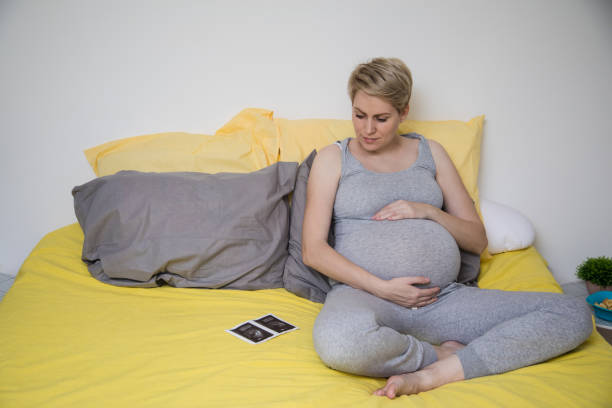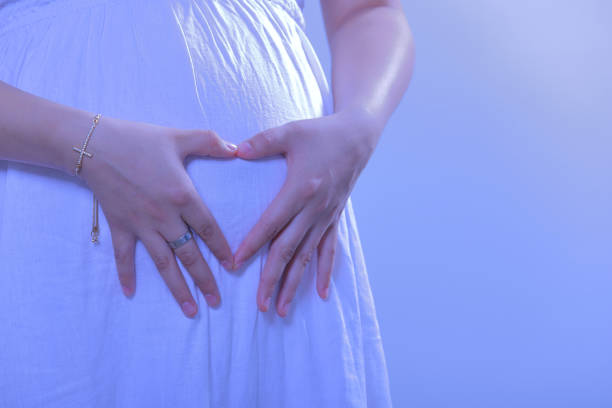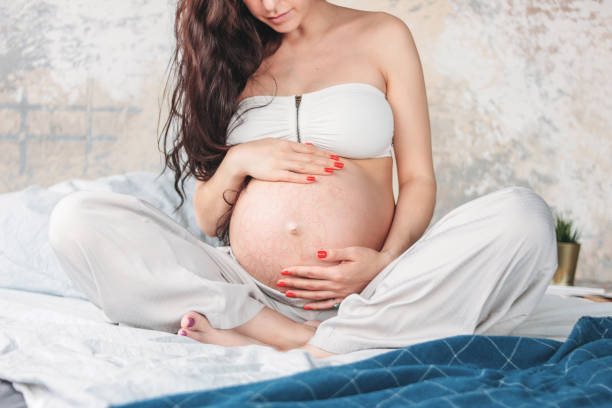Signs of Ovulation After Giving Birth
The journey of postpartum recovery is a perplexing and complex experience for new moms. Beyond the delight of inviting another life, the female body goes through tremendous changes during and after pregnancy. One essential part of a lady’s regenerative well-being post-pregnancy is the arrival of ovulation, the interaction where the ovaries discharge an egg for expected treatment. Perceiving the signs of ovulation isn’t just significant for those wanting to consider it once more and for individuals who wish to comprehend their bodies better. We will explore one of the important topics: signs of Ovulation After Giving Birth.

Figuring out Signs of Ovulation After Giving Birth
Signs of Ovulation After Giving Birth are a critical part of the feminine cycle and a principal part of female ripeness. After labor, the body progresses through hormonal and physiological changes as it returns to its non-pregnant state. Ovulation ordinarily continues for most ladies within the initial few months postpartum; however, the specific timing can shift generally based on individual factors, for example, breastfeeding, stress, and, by and large, well-being.
Hormonal Changes
Emotional and hormonal changes portray The post-pregnancy time frame as the body changes after supporting a developing baby. Luteinizing acid (LH) is an essential chemical involved with ovulation. In the days paving the way to ovulation, a flood in LH levels sets off the arrival of an egg from the ovary. Checking LH levels can be a powerful method for foreseeing ovulation; different ovulation indicator packs are accessible.
Menstrual Cycle Resumption
The arrival of the monthly cycle is an obvious sign that ovulation will likely occur. In any case, the planning of this return can change among ladies. Some might encounter the arrival of their feminine cycle within half a month of conceiving an offspring, while others may not see it for a very long time, particularly on the off chance that they are breastfeeding.
Breastfeeding and ovulation
Breastfeeding can suppress ovulation because of the raised levels of prolactin, a chemical responsible for milk creation. This is known as lactational amenorrhea, a characteristic type of conception prevention. Nonetheless, it isn’t idiotproof, and richness can return even while breastfeeding, particularly as the recurrence and power of nursing decline after some time.
Changes in Cervical Bodily Fluid
The consistency and presence of cervical bodily fluid can give important insights into the ovulation interaction. As a lady approaches ovulation, her cervical bodily fluid regularly becomes more apparent, elusive, and stretchy, looking like the surface of egg whites. This change is related to expanded ripeness, as the bodily fluid works with the section of sperm through the cervix and into the uterus.
Basal internal heat level (BBT)
Following basal internal heat levels includes estimating the body’s resting temperature every morning before participating in any active work. A lady’s BBT will generally ascent somewhat after ovulation, demonstrating the arrival of an egg. Observing this temperature shift can assist with recognizing the ripe window and pinpointing the most suitable days for origination.

Factors Influencing Ovulation After Giving Birth
A few variables can impact the timing and consistency of ovulation after giving birth. It’s fundamental for ladies to know about these elements to more readily figure out their extraordinary regenerative examples.
Breastfeeding
As referenced before, breastfeeding can defer the arrival of ovulation, particularly during selective breastfeeding. The recurrence and force of nursing assume an essential part in smothering fruitfulness. Nonetheless, as breastfeeding diminishes, hormonal movements happen, prompting the resumption of ovulation.
Stress
Physical and mental stress can affect the hormonal equilibrium in the body. Elevated degrees of stress might upset the consistency of periods and ovulation. Tracking down viable pressure methods, like care, exercise, or unwinding workouts, can add to more surprising ovulation designs.
Weight
Body weight can impact regenerative well-being, and limits on one or the other side of the range might prompt unpredictable ovulation. Ladies with low body weight or those encountering critical weight reduction might experience disturbances in their feminine cycles, while stoutness can contribute to hormonal irregularities influencing ovulation.
Age
Age is an essential component impacting the richness and consistency of ovulation. While certain ladies might continue ovulating soon after conceiving offspring, others might encounter a more drawn-out delay, especially as maternal age increments. More seasoned moms must be patient and talk with medical care suppliers if concerns emerge.
Contraceptive Decisions
The decision to use contraception after conceiving an offspring can influence the planning of ovulation. Hormonal contraceptives, for example, conception prevention pills, can control the period and defer the arrival of ovulation. Be that as it may, ladies who select non-hormonal techniques might encounter a quicker resumption of ripeness.
Strategies for Identifying Ovulation
Different strategies and devices can help ladies distinguish ovulation precisely. Joining various methodologies can give a more exhaustive comprehension of the ripe window.
Ovulation Indicator Packs
Available without a prescription, ovulation indicator units distinguish the flood in LH levels before ovulation. These units are like home pregnancy tests and can be a helpful and solid method for recognizing the most fruitful days in the feminine cycle.
Cervical Bodily Fluid Checking
Noticing changes in cervical bodily fluid includes focusing on its tone, consistency, and surface throughout the period. Diagramming these progressions on a schedule can assist with recognizing the days when ripeness is most noteworthy.
Basal Internal Heat Level Outlining
Outlining basal internal heat levels includes taking everyday temperature readings, noticing huge increments, and showing ovulation. Particular fruitfulness applications are accessible to help track and decipher this information.
Menstrual Cycle Following Applications
Various cell phone applications are intended to assist ladies with following their periods, fruitfulness windows, and ovulation expectations. These applications frequently use calculations considering different elements, including cycle length, to anticipate prolific days.
Fertility and Mindfulness Techniques
Richness mindfulness techniques include joining various markers, for example, BBT, cervical bodily fluid changes, and feminine cycle following, to anticipate ovulation precisely. This approach requires devotion and consistency but can be a viable regular family arrangement strategy.
Final Words about Signs of Ovulation After Giving Birth
Understanding the Signs of Ovulation After Giving Birth is fundamental for ladies exploring their post-pregnancy venture, whether they want to imagine once more or essentially observe their regenerative well-being. The body progresses through many-sided changes, impacted by hormonal movements, breastfeeding practices, and general well-being. Perceiving the signs of ovulation enables ladies to settle on informed conclusions about family arrangements and gives meaningful experiences into their concept of prosperity.

FAQs about Signs of Ovulation After Giving Birth
How long could ovulation at any point continue after giving birth?
Ovulation can continue as soon as half a month after conceiving an offspring, yet the timing differs among ladies. Factors, for example, breastfeeding, stress, and general well-being, can impact when ovulation returns.
Does breastfeeding influence ovulation?
Indeed, breastfeeding can suppressively affect ovulation because of raised levels of prolactin, a chemical responsible for milk creation. Be that as it may, as breastfeeding recurrence diminishes, hormonal movements can prompt the resumption of ovulation.
Can I get pregnant while breastfeeding and not having my period?
Indeed, it is feasible to get pregnant while breastfeeding, regardless of whether the period has not yet continued. Ovulation can happen before the main postpartum time frame, so it’s critical to utilize contraception if pregnancy isn’t wanted.
